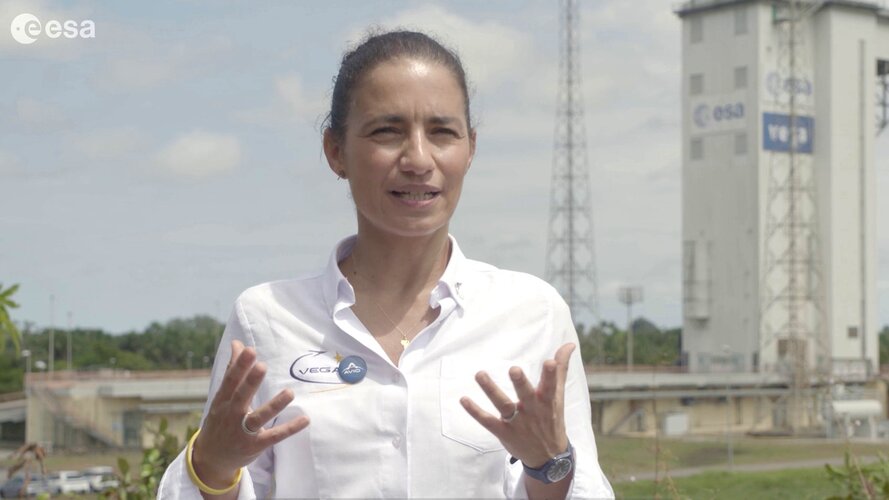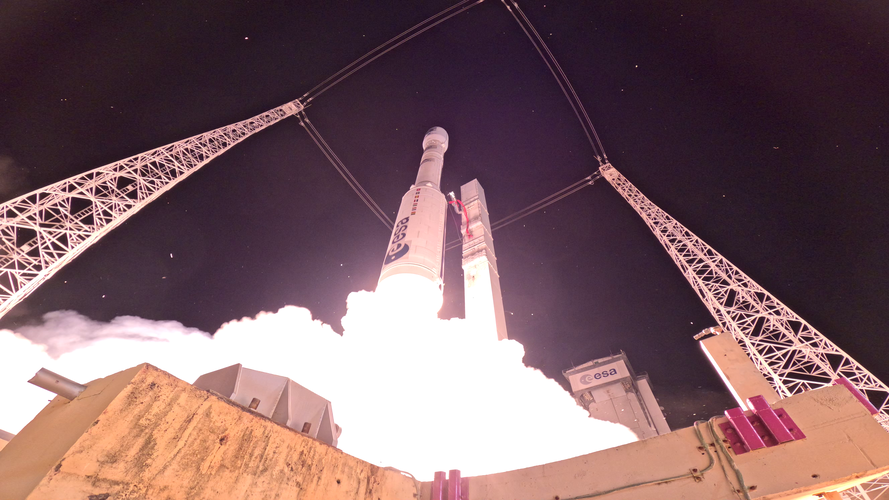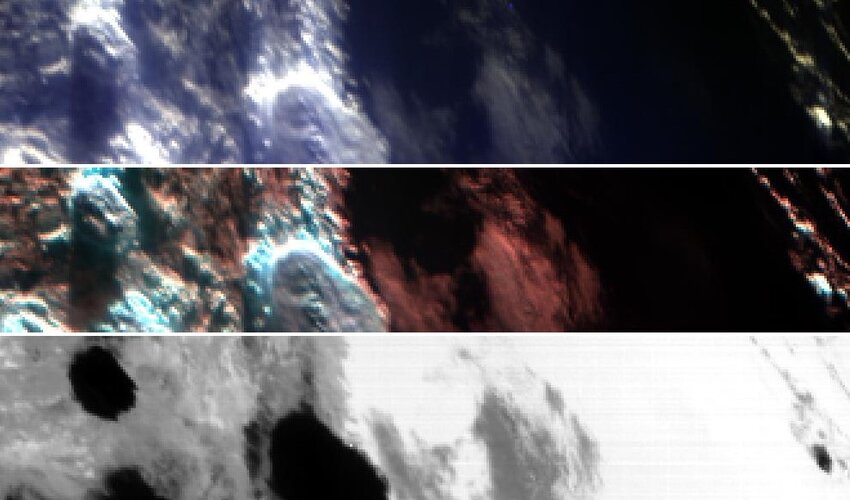
Copernical Team
Using a space elevator to get resources from Ceres

Here at UT, we've had several stories that describe the concept of a space elevator. They are designed to make it easier to get objects off Earth and into space. That, so far, has proven technically or economically infeasible, as no material is strong enough to support the structure passively, and it's too energy-intensive to support it actively.
However, it could be more viable on other worlds, such as the moon. But what about worlds farther afield? A student team from the University of Colorado at Colorado Springs looked at the use case of a space elevator on Ceres and found that it could be done with existing technology. The findings are published in the journal 2024 Regional Student Conferences.
Before we discuss why anyone would want to put a space elevator on Ceres, let's first examine the technologies that would make it possible. Every space elevator design has three different components: an anchor, a tether, and a counterweight.
Who is on SpaceX's historic private spacewalk mission?

Four US civilians are set to attempt the first-ever private spacewalk on Thursday—a risky endeavor usually reserved for trained astronauts from government agencies.
The ambitious mission, dubbed Polaris Dawn, is being carried out on a SpaceX capsule that launched early Tuesday from Florida.
Who are the select few to pioneer this new chapter of space exploration?
Jared Isaacman, billionaire
The driving force behind the mission is Jared Isaacman, a billionaire who serves as mission commander.
The 41-year-old American from Pennsylvania is the CEO of the digital finance company Shift4 Payments, which he founded in his family's basement when he was only 16.
Isaacman is a seasoned pilot who is qualified to fly military aircraft and holds several world records.
He had previously gone into space in 2021 as part of another SpaceX mission he chartered, Inspiration4, which was the first orbital spacecraft to feature no professional astronauts.
SpaceX launches billionaire to conduct the first private spacewalk

A daredevil billionaire rocketed back into orbit Tuesday, aiming to perform the first private spacewalk and venture farther than anyone since NASA's Apollo moonshots.
Unlike his previous chartered flight, tech entrepreneur Jared Isaacman shared the cost with SpaceX this time around, which included developing and testing brand new spacesuits to see how they'll hold up in the harsh vacuum.
If all goes as planned, it will be the first time private citizens conduct a spacewalk, but they won't venture away from the capsule. Considered one of the riskiest parts of spaceflight, spacewalks have been the sole realm of professional astronauts since the former Soviet Union popped open the hatch in 1965, closely followed by the U.S.
Space Team Europe for Vega: final liftoff
 Video:
00:03:13
Video:
00:03:13
Interviews with personnel that worked on the last Vega rocket, flight VV24, with Sentinel-2C onboard.
The third Copernicus Sentinel-2 satellite launched from Europe’s Spaceport in French Guiana aboard the final Vega rocket on 5 September at 03:50 CEST (4 September 22:50 local time).
After a successful launch, Sentinel-2C separated from its Vega rocket at approximately 04:48 CEST. Around 14 minutes later, at 05:02 CEST, ESA’s ESOC mission operations centre in Darmstadt, Germany, received the all-important first signals from the satellite indicating that it had safely arrived in orbit.
Giovanna Manca, Vega launch complex operations manager for Avio, Fulvio Spaziani Brunella, Site manager for Avio,
A look back at Sentinel-2C's ride into space on Vega
 Video:
00:01:21
Video:
00:01:21
The third Copernicus Sentinel-2 satellite, Sentinel-2C, has launched aboard the last Vega rocket, flight VV24, from Europe’s Spaceport in French Guiana. The rocket lifted off on 5 September at 03:50 CEST (4 September 22:50 local time).
Sentinel-2C will provide high-resolution data that is essential to Copernicus – the Earth observation component of the European Union’s Space programme. Developed, built and operated by ESA, the Copernicus Sentinel-2 mission provides high-resolution optical imagery for a wide range of applications including land, water and atmospheric monitoring.
The mission is based on a constellation of two identical satellites flying in the
SpaceX Polaris Dawn mission aiming for history with first private spacewalk

The SpaceX Polaris Dawn mission, a daring multiday orbital expedition that will feature the first-ever spacewalk by private citizens, is targeting liftoff early Tuesday, though weather could play spoilsport.
A four-member crew, led by Shift4 Payments CEO Jared Iscaacman, is also aiming to fly deeper into space than any other manned mission in more than half a century, reaching a peak altitude of 870 miles (1,400 kilometers).
"SpaceX is targeting Tuesday, September 10 at 3:38 am ET (0738 GMT) for Falcon 9's launch of Polaris Dawn to low-Earth orbit from Launch Complex 39A at NASA's Kennedy Space Center in Florida," SpaceX said in a news release.
Juice confirms that Earth is habitable

During its flyby of Earth on 20 August, ESA’s Jupiter Icy Moons Explorer (Juice) found ingredients for life in Earth’s atmosphere.
Satellites enable accurate monitoring of groundwater use with OPENet
 Droughts across the Western U.S. have sparked a growing interest in developing groundwater management strategies. Farmers and water managers have long relied on groundwater meters to measure the amount of water used for irrigation, but these meters are not widely available. To address this, researchers at the Desert Research Institute (DRI) investigated whether OpenET, a satellite-based platform
Droughts across the Western U.S. have sparked a growing interest in developing groundwater management strategies. Farmers and water managers have long relied on groundwater meters to measure the amount of water used for irrigation, but these meters are not widely available. To address this, researchers at the Desert Research Institute (DRI) investigated whether OpenET, a satellite-based platform Satellites unlock new insights into aerosol layer heights over oceans
 A new study has shown that NASA's PACE satellite, equipped with the Ocean Color Instrument (OCI), can precisely measure the height of aerosol layers above ocean surfaces. This capability is essential for improving our understanding of how aerosols influence weather patterns and climate and is a major advancement in atmospheric correction techniques used in satellite-based ocean color monitoring.
A new study has shown that NASA's PACE satellite, equipped with the Ocean Color Instrument (OCI), can precisely measure the height of aerosol layers above ocean surfaces. This capability is essential for improving our understanding of how aerosols influence weather patterns and climate and is a major advancement in atmospheric correction techniques used in satellite-based ocean color monitoring. NASA begins monitoring polar heat emissions in far-infrared spectrum
 NASA's latest climate-focused mission has commenced its study of far-infrared radiation emitted by the Arctic and Antarctic regions. The data collected by the Polar Radiant Energy in the Far-Infrared Experiment (PREFIRE) will play a critical role in predicting the impact of climate change on Earth's ice, oceans, and weather, aiding global efforts to prepare for environmental shifts.
PREFIR
NASA's latest climate-focused mission has commenced its study of far-infrared radiation emitted by the Arctic and Antarctic regions. The data collected by the Polar Radiant Energy in the Far-Infrared Experiment (PREFIRE) will play a critical role in predicting the impact of climate change on Earth's ice, oceans, and weather, aiding global efforts to prepare for environmental shifts.
PREFIR 